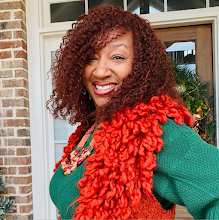The Fragile Black Middle Class: Race and Money in Chicago
Chicago Sun Times
More blacks than ever are living the middleclass life — attending college, working white-collar jobs, commanding comfortable salaries. But, when they leave the office, middle-class African Americans often return to predominantly black neighborhoods, to homes valued at a fraction of what similar homes sell for in their white coworkers’ neighborhoods.
It’s one of the legacies of segregation — blacks might have achieved similar incomes but still have skimpier bottom lines. In fact, blacks’ assets amount to 10 cents for every white dollar of assets. Because homes are usually people’s most valuable asset, that puts blacks at a huge disadvantage for accumulating wealth. So blacks have less to invest — and less, as a result, to pass on to their children, perpetuating the middle-class divide.
PART 1: THE WEALTH GAP
Racial gap in home values hurts ability to pass on wealth
Her two-bedroom bungalow in Avalon Park, a middle-class, black neighborhood on the South Side, has nearly doubled in value since she bought it 15 years ago. But Laverne Haynes is certain of this: If her neighborhood was largely white, her home would be worth much more.
Haynes and many others have long suspected that home values in black neighborhoods don't appreciate as fast as they do in white neighborhoods. Now, new research shows that not only do African-American homeowners typically get less when they sell their homes, but the disparity is feeding a growing wealth gap between blacks and whites.
PART 2: CLASS CONFLICT
Class conflict hits home
Rashaun Williams, a 26-year-old investment banker, owns two houses, drives a BMW, and his annual salary is well above middle class. But Williams doesn't live on the North Shore or in Lincoln Park or on the Gold Coast, as many in his income bracket might.
Home for Williams is the North Kenwood/Oakland neighborhood on the South Side, an area once in the shadow of towering public housing complexes. As recently as 2000, it was one of the city's poorest communities.
PART 3: SLIGHTED SUBURBS
Slighted in the suburbs
"Disadvantaged" hardly seems a word that would apply to people living in $200,000 homes with prize-worthy yards and sporty trucks and coupes tucked inside two-car garages.
Yet amid these hallmarks of prosperity hides a deeper truth: Middle-class and affluent blacks in the suburbs are concentrated in areas that provide fewer economic opportunities in terms of rising home values and access to good schools and jobs, making it harder for them to catch up, and keep up, financially with whites.
FOLLOW-UP
Mary Mitchell: Black leaders speak out
Having grown up in public housing, I already knew that middle-class black folks can be snobbish. Still, I found the level of contempt some African Americans expressed for low-income African Americans in the Sun-Times series "The Fragile Black Middle Class: Race and Money in Chicago" disheartening.
Instant Messages: Series called biased, superb
This week, the Chicago Sun-Times ran a three-day series titled "The Fragile Black Middle Class" by staff reporters Cheryl L. Reed and Monifa Thomas. Following is an edited sampling of the e-mail responses the reporters have received from readers:
RELATED STORIES
• Many shun stocks -- even banks
• Fewer marriages, more divorces
Wednesday, November 30, 2005
Subscribe to:
Post Comments (Atom)





No comments:
Post a Comment